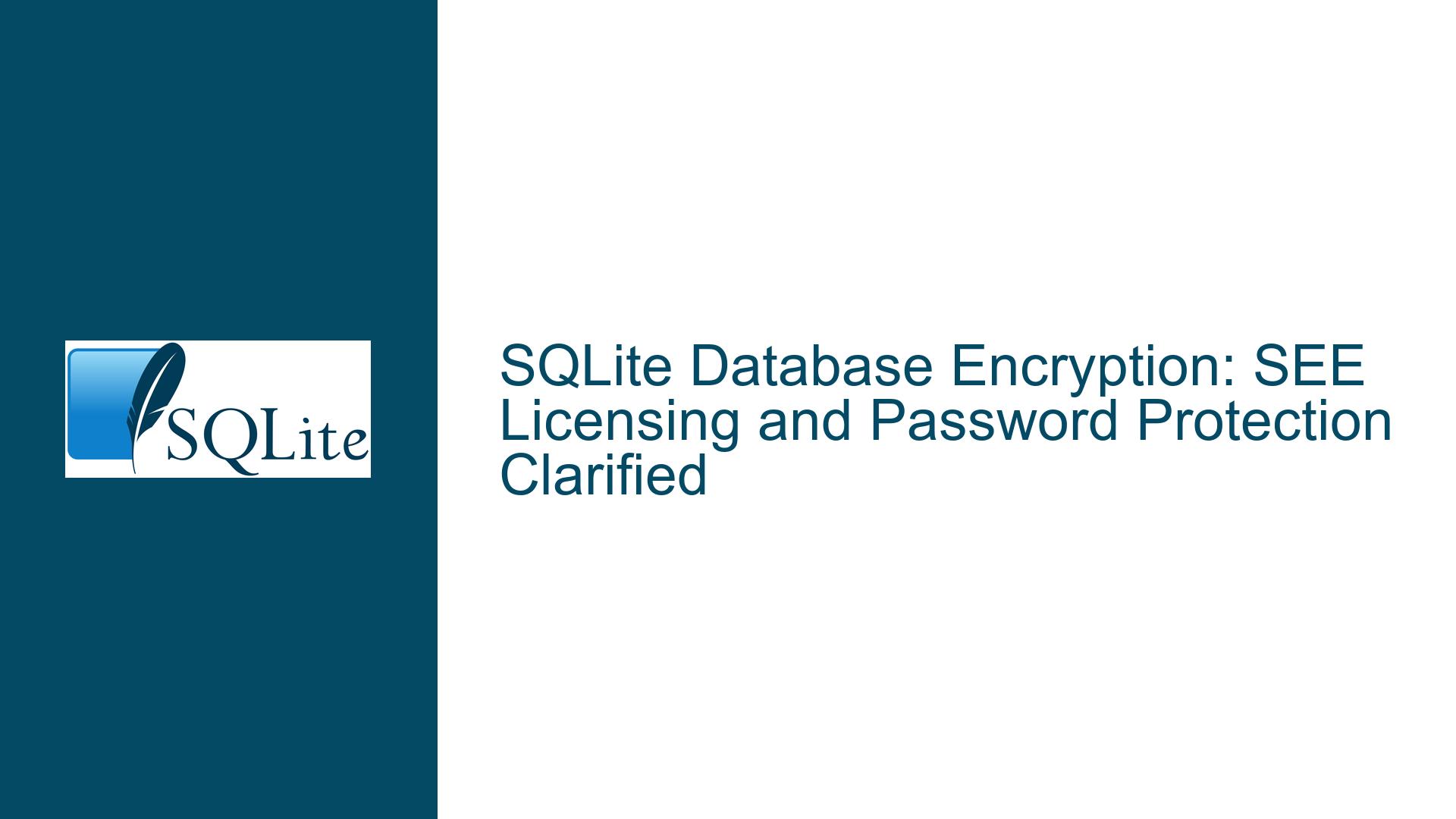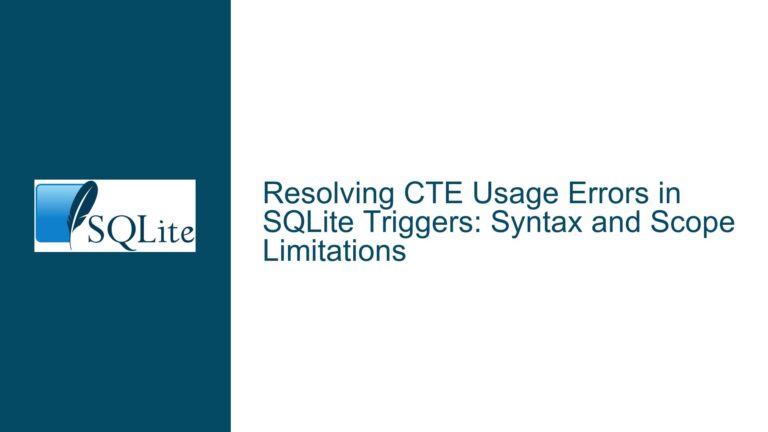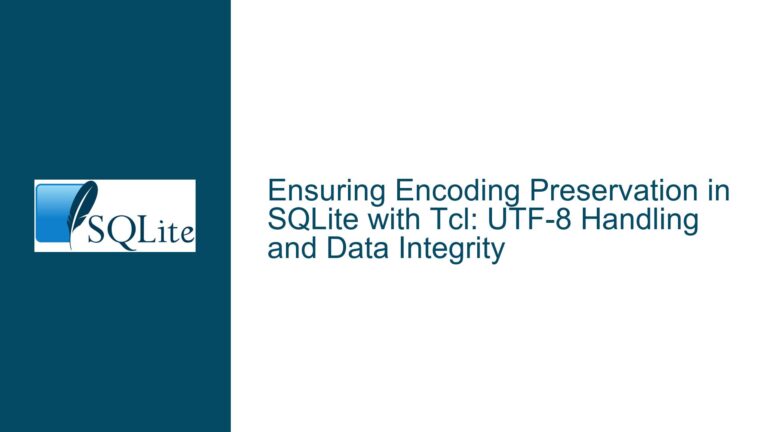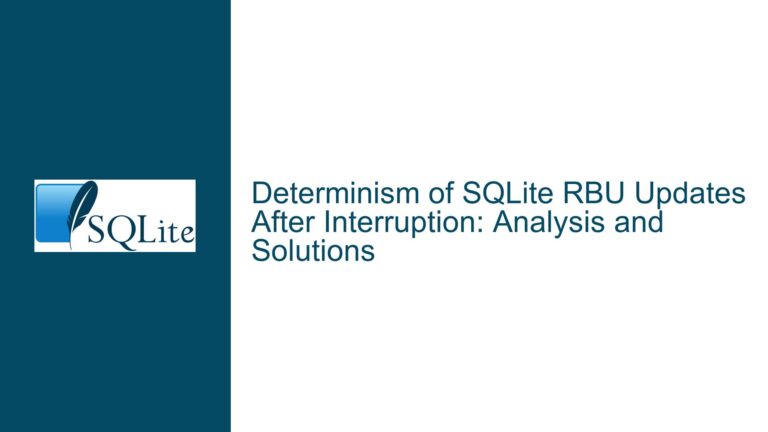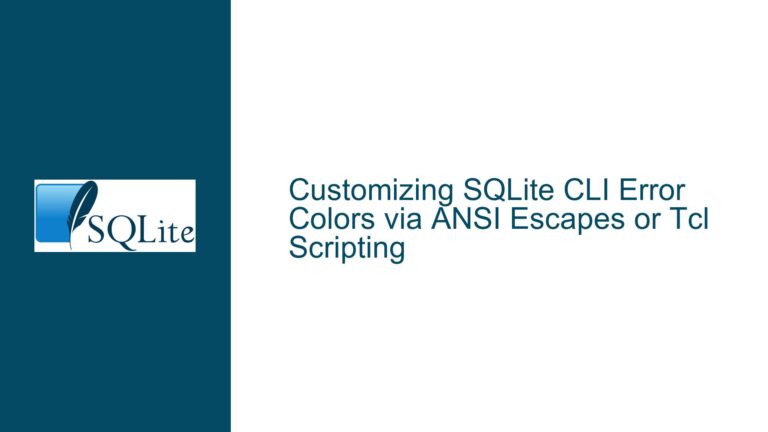SQLite Database Encryption: SEE Licensing and Password Protection Clarified
Understanding SQLite Database Encryption, SEE Licensing Requirements, and Password Protection Mechanisms
The process of encrypting SQLite databases often raises questions about licensing requirements, compatibility between encryption methods, and the technical steps needed to access encrypted data. A common point of confusion stems from the relationship between the setPassword method (frequently used in third-party libraries) and the SQLite Encryption Extension (SEE), a commercial offering from the SQLite team. This guide provides a comprehensive breakdown of how SQLite database encryption works, the role of SEE, and troubleshooting steps to resolve issues related to accessing encrypted databases.
Core Components of SQLite Database Encryption
SQLite does not natively support encryption in its public domain version. To implement encryption, developers rely on external extensions or third-party libraries. Two primary entities are involved in this ecosystem: the SQLite Encryption Extension (SEE) and open-source encryption libraries like SQLCipher. The setPassword method is often associated with SQLCipher, a widely-used open-source extension that implements transparent 256-bit AES encryption. SEE, on the other hand, is a proprietary extension sold directly by the SQLite team, which uses a different encryption architecture.
A critical distinction between these two approaches lies in their licensing and compatibility. SEE requires a paid license for commercial use, while SQLCipher operates under a BSD-style license. When a database is encrypted using SEE, the encrypted file contains a header signature that is incompatible with SQLCipher-encrypted databases, and vice versa. The setPassword method is not part of the standard SQLite API; it is a convenience function provided by SQLCipher and similar libraries. If a developer uses setPassword in their code, they are likely using SQLCipher or a derivative, not SEE. This distinction is crucial because attempting to open a SQLCipher-encrypted database with SEE (or vice versa) will fail due to header mismatches and incompatible encryption routines.
Licensing and Technical Requirements for Accessing Encrypted Databases
The need to purchase an SEE license arises only when the database was explicitly encrypted using SEE. If the encryption was performed with SQLCipher or another third-party library, SEE is irrelevant. To determine whether SEE is required, developers must first identify the encryption method used. This can be done by examining the application’s source code for dependencies on SQLCipher or SEE-specific APIs. For example, SQLCipher introduces functions like sqlite3_key and sqlite3_rekey, while SEE uses sqlite3_activate_see and requires a license key.
If SEE was used, a valid license must be purchased, and the SEE extension must be compiled into the SQLite library or loaded as a dynamic extension (e.g., a DLL or shared object). The licensing model for SEE is per-developer, meaning each individual working with the encrypted database needs a license. However, if the encryption was implemented via SQLCipher, no commercial license is required unless the project itself imposes additional restrictions. A common pitfall occurs when developers assume that any form of SQLite database encryption automatically ties into SEE, leading to unnecessary licensing purchases or integration efforts.
Resolving Encryption Compatibility Issues and Implementing Correct Decryption
To troubleshoot issues with opening an encrypted SQLite database, follow these steps:
Identify the Encryption Method: Inspect the application’s codebase for references to encryption libraries. If
sqlite3_keyorsqlite3_rekeyis present, the database is likely encrypted with SQLCipher. If the code usessqlite3_activate_seeor requires a license key, SEE is involved. Additionally, attempt to open the database using a SQLite browser tool that supports multiple encryption formats. Tools like DB Browser for SQLite with SQLCipher support can help diagnose header mismatches.Validate Library Integration: For SEE, ensure the license key is correctly applied and that the SEE extension is properly loaded. In SQLite, this involves compiling the SEE source code with the
SQLITE_HAS_CODECflag or dynamically loading the SEE extension at runtime. For SQLCipher, verify that the correct version of the library is linked, as older versions may use different default encryption parameters (e.g., PBKDF2 iterations).Re-encrypt the Database if Necessary: If the encryption method was misapplied, use the correct library to decrypt and re-encrypt the database. For example, if a database was accidentally encrypted with SEE but needs to be accessed using SQLCipher, open it with SEE, export the data, and re-import it into a new database encrypted via SQLCipher’s
setPasswordmethod.
By systematically addressing the encryption method, licensing requirements, and library integration, developers can resolve access issues and ensure compatibility between their code and the encrypted database.
